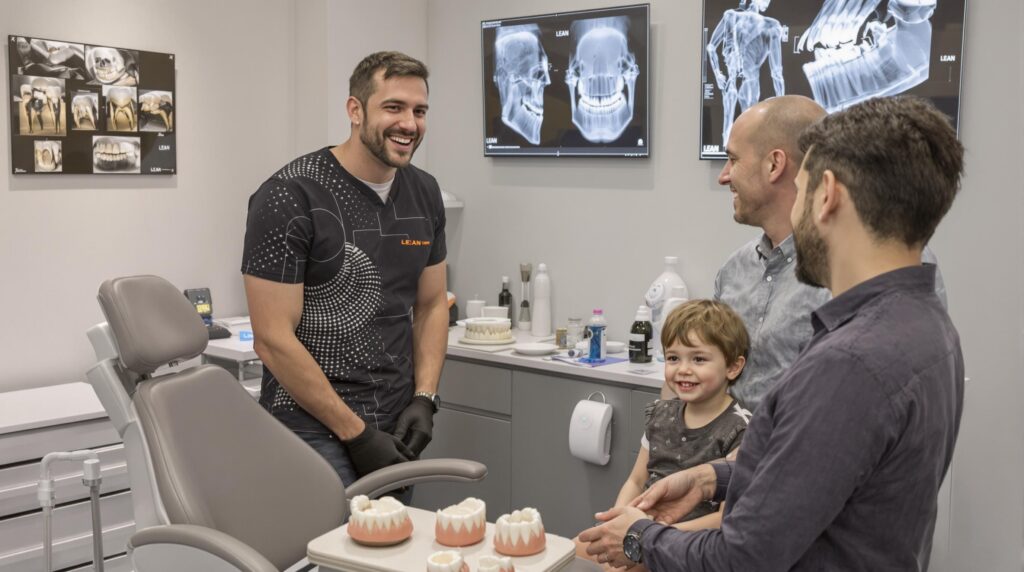
In Recent Years
The dental and orthodontic community has engaged in a fierce debate over the implications of mouth breathing, particularly in early childhood, and its potential to influence craniofacial development. The article by Sanjivan Kandasamy, as published in the American Journal of Orthodontics and Dentofacial Orthopedics, meticulously examines existing literature and offers a fresh perspective on the matter.
Study Design and Biases
Kandasamy systematically explores historical studies, notably those by Linder-Aronson and Harvold et al., which examined the effects of nasal obstruction on craniofacial growth. Despite their foundational role in prevailing assumptions, these studies contain significant methodological limitations. For example, the use of rhesus monkeys in some investigations poses questions about the validity of extrapolating findings to humans, given that monkeys are obligate nasal breathers. This distinction is crucial as this physiological difference creates an overstated scenario when applied to human models. Furthermore, there’s a notable gap in objective measures to define and diagnose mouth breathing in children, resulting in subjective biases. Kandasamy’s critical evaluation suggests that these early reports offered an associational rather than causal relationship between nasal obstruction and facial development.
Clinical Implications and Interventions
Clinically, the long-standing assumption that mouth breathing leads to detrimental craniofacial adaptations, such as increased vertical facial height or mandible displacement, is being challenged. Research denotes that not all children exhibiting these traits are confirmed mouth breathers, nor do they inevitably develop associated syndromes like obstructive sleep apnea (OSA) or attention deficit hyperactivity disorder (ADHD). The article advocates for myofunctional therapy and functional appliances as less invasive early interventions. However, Kandasamy stresses the evidence does not robustly support claims of these treatments effectively altering mandibular growth trajectories or directly changing respiratory patterns from mouth to nasal breathing.
Additionally, Kandasamy questions the widespread recommendation for maxillary expansion absent a transverse discrepancy, underscoring risks of over-expansion and unnecessary bite alterations. This aligns with contemporary endorsements for a more conservative approach, emphasizing growth and development considerations over premature intervention.
A Caution Against Overdiagnosis
The narrative brings to light the tendency in the community to overdiagnose conditions linked to mouth breathing, leveraging this practice model to justify economically motivated treatments. Kandasamy warns against this paradigm, advocating instead for a diagnostic approach grounded in scientific rigor and validated evidence.
Conclusion
Kandasamy’s review calls for heightened critical scrutiny in the diagnosis and management of mouth breathing in children. The discourse encourages clinicians to separate anecdotal belief from empirically-supported treatment protocols, ensuring decisions are patient-centered and evidence-driven. Through a practical lens, it becomes imperative to refine diagnostic processes and embrace individualized treatment planning over broad generalizations about mouth breathing and its implications.
The study underscores a critical takeaway: our commitment to depth of understanding and academic integrity should always supersede profitability or convenience in clinical practice. As this conversation evolves, dental professionals are invited to remain vigilant in their assessment methods and discerning in the adoption of interventions rooted firmly in valid, actionable evidence.
For further reading, delve into the full source: Kandasamy, S., “Mouth breathing and orthodontic intervention: Does the evidence support keeping our mouths shut?” American Journal of Orthodontics and Dentofacial Orthopedics (2025), https://doi.org/10.1016/j.ajodo.2025.02.005.
References:
➡️ View Dr. Baxmann‘s Books

